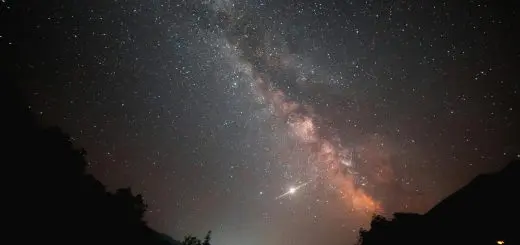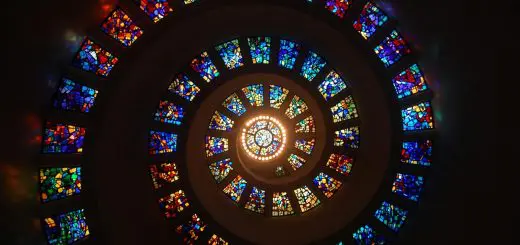Beltane: Celtic May Day Festival and Bel Fire

Looking for more amazing products? Check out our online store and explore our collection here! Happy shopping!
Before diving in, please note: This post is for informational purposes only. If you’d like to know more about how we approach topics, feel free to check out our friendly Disclaimer Page.
Hey there, amazing readers! 
We’re committed to delivering quality posts, and your support (even just sticking around despite the ads) means everything to us. So, bear with us, and thanks for helping us keep the good vibes rolling. Now, on to the fun stuff!
TRANSLATE BUTTON AT THE END OF THE ARTICLE
Overview
Beltane, also known as Celtic May Day, is a vibrant and ancient festival celebrated by the Celtic people.
This joyful celebration marks the beginning of summer and is filled with rituals, traditions, and symbolism.
The festival is deeply rooted in Celtic culture, with its origins dating back centuries.
Beltane is a time of fertility, growth, and connection with nature and the divine.
In this article, we will delve into the history, significance, and various aspects of Beltane, including the rituals, bonfires, maypole dancing, and traditional foods and drinks associated with the festival.
We will also explore the mythology behind Beltane and how it is celebrated in modern times around the world.
The Origins of Beltane Celebration
The origins of Beltane can be traced back to the ancient Celtic tribes that inhabited Ireland, Scotland, and parts of Europe.
The festival is believed to have its roots in the pre-Christian era, where it was celebrated as a fertility festival.
Beltane marks the midpoint between the spring equinox and the summer solstice, symbolizing the transition from winter to summer.
The word "Beltane" is derived from the Gaelic word "Bealtaine," which means "bright fire" or "lucky fire." These fires were central to the celebration and were believed to have purifying and protective properties.
Significance of Beltane in Celtic Culture
Beltane holds great significance in Celtic culture as it represents the renewal of life and the power of fertility.
It is a time when the earth fully awakens from its winter slumber, and nature bursts forth with vibrant colors and blossoms.
The festival is closely associated with the Celtic god Bel and the goddess Brigid, who represents fertility, healing, and poetry.
Beltane is a celebration of the divine union between the masculine and feminine energies, symbolizing the balance and harmony in the natural world.
The Traditions and Rituals of Beltane
Beltane is rich in traditions and rituals that are passed down through generations.
One common practice is the lighting of bonfires, which are believed to drive away evil spirits and protect the community.
People would leap over the flames to bring good fortune and fertility.
Another significant aspect of Beltane is the maypole, a tall wooden pole decorated with flowers, ribbons, and other adornments.
Maypole dancing is a joyous activity where participants weave intricate patterns with the ribbons as they dance around the pole, symbolizing the interconnectedness of life.
The Symbolism of the Bel Fire
The Bel Fire is a sacred symbol associated with Beltane.
It is a central element of the festival and signifies the return of the sun’s warmth and light.
The fire also represents purification and transformation, as well as the power of the divine masculine energy.
Lighting the Bel Fire is a way to honor the Celtic god Bel and invoke his blessings for a bountiful and prosperous summer.
It is customary for each household to extinguish their hearth fire and relight it from the central Bel Fire, symbolizing the community’s connection and unity.
Maypole Dancing: A Highlight of Beltane
Maypole dancing is one of the most beloved and visually stunning traditions of Beltane.
The maypole itself represents the axis mundi, the sacred center connecting the earth and the heavens.
The ribbons attached to the pole are held by dancers who weave intricate patterns as they move in a joyful and rhythmic dance.
The weaving of the ribbons symbolizes the interplay and harmony of opposites, such as male and female energies, light and dark, and life and death.
Maypole dancing is a celebration of fertility, abundance, and the interconnectedness of all beings.
Traditional Foods and Drinks for Beltane
Beltane is also a time to indulge in traditional foods and drinks that are closely associated with the festival.
One popular dish is bannock, a type of bread made with oats or barley.
It is often cooked on the bonfire or in a hearth and shared among the community as a symbol of unity and abundance.
Another traditional food is nettle soup, made with fresh nettles harvested during this time of year.
Nettles are believed to have purifying and healing properties.
Additionally, Beltane is a time for brewing special drinks such as mead, a honey-based alcoholic beverage, and herbal teas made from flowers and herbs that are in bloom during this season.
Beltane Bonfires: Ancient Pagan Customs
Bonfires play a significant role in the Beltane celebration and are considered an ancient pagan custom.
These fires were traditionally lit on hilltops or in sacred spaces and served multiple purposes.
The flames were believed to have protective powers, warding off negative energies and evil spirits.
They were also seen as a symbol of the sun’s energy and were used to encourage the growth of crops and livestock.
People would often jump over the bonfires, believing that it would bring them good luck, fertility, and purification.
The ashes from the bonfires were then spread over the fields to ensure a fertile growing season.
Beltane and Fertility: Celebrating Life and Growth
Fertility is a central theme of Beltane, and the festival is dedicated to celebrating life and growth.
The timing of the festival aligns with the blossoming of flowers, the birth of livestock, and the mating season of many animals.
In Celtic mythology, Beltane is associated with the union between the god and goddess, representing the fertile earth and the life-giving sun.
It is a time when couples may engage in fertility rituals to invoke blessings for conceiving children or ensuring a successful harvest.
Beltane is a celebration of the cyclical nature of life, acknowledging the interconnectedness between humans, nature, and the divine.
Modern Celebrations of Beltane Around the World
While Beltane originated in Celtic lands, its celebration has spread to various parts of the world.
In modern times, Beltane is still observed by many people who are drawn to its deep connection with nature and its joyful traditions.
In Ireland and Scotland, communities come together to light bonfires, perform Maypole dances, and partake in feasts and music.
In other countries, such as the United States and Canada, Beltane is often celebrated by pagan and Wiccan communities who honor the ancient traditions.
These celebrations typically involve rituals, outdoor gatherings, and the sharing of food and drink.
Beltane: Connecting with Nature and the Divine
Beltane provides an opportunity for individuals to connect with nature and the divine in a profound way.
The festival encourages people to spend time outdoors, immerse themselves in the beauty of the natural world, and reflect on the cycles of life and the changing seasons.
It is a time to honor the earth, show gratitude for its abundance, and align oneself with the rhythms of the natural world.
Beltane offers a chance for spiritual renewal, personal growth, and a deepening of one’s connection with the divine energies that permeate all of existence.
Exploring the Mythology behind Beltane
The mythology surrounding Beltane is rich and varied, reflecting the deep reverence the Celtic people had for the natural world.
One popular myth is the tale of the May Queen and the May King.
The May Queen represents the goddess of spring and fertility, while the May King embodies the youthful and fertile energy of the sun god.
Their union during Beltane symbolizes the union of the earth and the sun, the masculine and feminine energies that bring forth life and abundance.
Other myths associated with Beltane include stories of shape-shifting faeries, the sacred marriage between the god and goddess, and the battle between the light and dark forces of nature.
Conclusion
Beltane is a vibrant and ancient Celtic festival that celebrates the arrival of summer and the power of fertility.
It is a time of joyful rituals, traditions, and symbolism that connect people with nature and the divine.
The festival’s origins can be traced back to the ancient Celtic tribes, and its significance in Celtic culture is reflected in the various customs and beliefs associated with Beltane.
Today, Beltane is celebrated by people around the world who seek to honor the earth, embrace the cycles of life, and cultivate a deep sense of connection with the natural world.
Whether through bonfires, maypole dancing, or the enjoyment of traditional foods and drinks, Beltane offers a meaningful and enriching experience that celebrates life, growth, and the interconnectedness of all beings.

The Enlightenment Journey is a remarkable collection of writings authored by a distinguished group of experts in the fields of spirituality, new age, and esoteric knowledge.
This anthology features a diverse assembly of well-experienced authors who bring their profound insights and credible perspectives to the forefront.
Each contributor possesses a wealth of knowledge and wisdom, making them authorities in their respective domains.
Together, they offer readers a transformative journey into the realms of spiritual growth, self-discovery, and esoteric enlightenment.
The Enlightenment Journey is a testament to the collective expertise of these luminaries, providing readers with a rich tapestry of ideas and information to illuminate their spiritual path.
Our Diverse Expertise
While our primary focus is on spirituality and esotericism, we are equally passionate about exploring a wide range of other topics and niches 

To ensure we provide the most accurate and valuable insights, we collaborate with trusted experts in their respective domains 
Our blog originally focused on spirituality and metaphysics, but we’ve since expanded to cover a wide range of niches. Don’t worry—we continue to publish a lot of articles on spirituality! Frequently visit our blog to explore our diverse content and stay tuned for more insightful reads.
Hey there, amazing reader! 
Check out our store here and take a peek at some of our featured products below! Thanks for being awesome!













